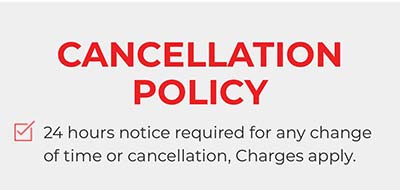Fitting driving lessons into a busy school or work schedule can be challenging, but with smart planning, it’s definitely possible. Consider booking early morning practice sessions when roads are quieter and your mind is fresh. Use weekends or public holidays for longer, focused lessons. Even short breaks during the day can be used to review theory or watch driving tutorials. Prioritize safety topics like car stopping distances to make the most of your time. Choosing a flexible driving school in Wyndham Vale that understands student and working life can help you stay on track and progress steadily toward your license.
Understanding the Emergency Stop
Before we dive into the specifics of how to complete an emergency stop, it’s essential to understand why this maneuver is crucial. An emergency stop simulates a situation where you need to stop your vehicle quickly and safely to avoid a collision. During your driving test, the examiner will ask you to perform an emergency stop to test your ability to react swiftly and control your vehicle under pressure.
Step-by-Step Instructions
Step 1: Stay Calm and Alert
When the examiner asks you to perform an emergency stop, stay calm and focused. Keep your hands on the steering wheel and your eyes on the road ahead.
Step 2: Brake Firmly
When you hear the command to stop, don’t hesitate. Press the brake pedal firmly and quickly. Do not slam on the brakes, as this can cause your vehicle to skid.
Step 3: Clutch Down
Simultaneously, depress the clutch pedal to prevent stalling the engine. This step is crucial, especially if you drive a manual transmission vehicle.
Step 4: Bring the Vehicle to a Complete Stop
As you apply the brakes and clutch, steer your vehicle to a safe stop on the side of the road. Ensure that you come to a complete stop before releasing the pedals. Recognizing common road signs can help you predict when danger might occur.
Step 5: Engage the Handbrake
Once your vehicle has come to a stop, engage the handbrake to secure your vehicle in place. This step is essential to prevent your vehicle from rolling backwards.
Step 6: Put the Vehicle in Neutral
After engaging the handbrake, shift your vehicle into neutral. This step is necessary to ensure that your vehicle is in a safe and stable position.
Common Mistakes to Avoid
Understanding the steps to complete an emergency stop is crucial, but avoiding common mistakes can further increase your chances of passing the driving test. Here are some common mistakes to avoid:
Slamming on the Brakes
One of the most common mistakes during an emergency stop is slamming on the brakes. Remember to brake firmly but smoothly to avoid skidding and losing control of your vehicle.
Forgetting to Depress the Clutch
If you drive a manual transmission vehicle, forgetting to depress the clutch during an emergency stop can lead to stalling the engine. Practice coordinating the clutch and brake pedals to ensure a smooth stop.
Failing to Engage the Handbrake
Forgetting to engage the handbrake after coming to a stop can result in your vehicle rolling backwards. Make it a habit to engage the handbrake every time you park your vehicle.




